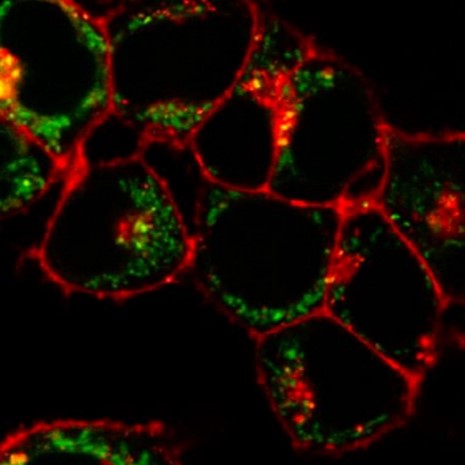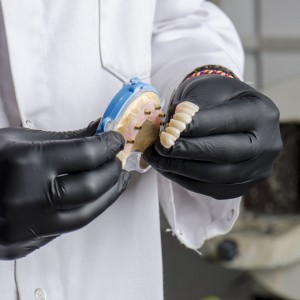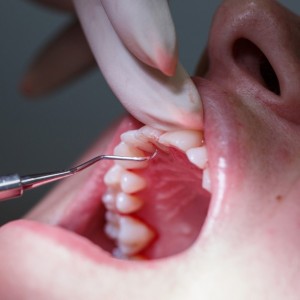
In Quest for Better NSAIDs, Researchers Decouple Inflammation from Pain
Scientists at the NYU Pain Research Center have identified which receptor in prostaglandins—the hormone-like substance targeted by common painkillers—causes pain but not inflammation. The findings, published in the journal Nature Communications, may help researchers to develop more selective drugs to treat pain with fewer side effects.
“Inflammation and pain are usually thought to go hand in hand. But being able to block pain and allow inflammation—which promotes healing—to proceed is an important step in improved treatment of pain,” said study author Nigel Bunnett, professor and chair of the Department of Molecular Pathobiology at NYU College of Dentistry and a faculty member in the NYU Pain Research Center.
Non-steroidal anti-inflammatory drugs, or NSAIDs, are among the most commonly taken medicines in the world, with an estimated 30 billion doses each year in the US alone. The drugs are available both over the counter (e.g., ibuprofen or aspirin) and as prescription medications. Unfortunately, long-term use of most NSAIDs carries serious risks, including damage to the lining of the stomach, increased bleeding, and issues with the heart, kidneys, and liver.
NSAIDs work by blocking enzymes that produce prostaglandins, reducing the level of prostaglandins, inflammation, and pain. Scientists commonly believe that getting rid of inflammation is what treats the pain. However, inflammation—the immune system's response to injury or infection—can be protective.
“Inflammation can be good for you—it repairs and restores normal function,” said study author Pierangelo Geppetti, an adjunct professor at the NYU Pain Research Center, professor emeritus at the University of Florence, and former director of the Headache Center of Careggi University Hospital. “Inhibiting inflammation with NSAIDs may delay healing and could delay recovery from pain. A better strategy to treat prostaglandin-mediated pain would be to selectively reduce the pain without affecting inflammation’s protective actions.”
In their study, the researchers focused on prostaglandin E2 (PGE2), which is considered a main mediator of inflammatory pain, in Schwann cells. Schwann cells are found outside the brain in the peripheral nervous system and play an important role in migraine and other forms of pain.
PGE2 has four different receptors. Geppetti’s prior studies point to the EP4 receptor for PGE2 as the main receptor involved in producing inflammatory pain. However, in the Nature Communications study, the researchers used a more targeted approach and found that a different receptor—EP2—was largely responsible for pain. Delivering drugs locally to silence only the EP2 receptor in Schwann cells removed pain responses in mice without affecting inflammation.
“To our great surprise, blocking the EP2 receptor in Schwann cells abolished prostaglandin-mediated pain but the inflammation took its normal course. We effectively decoupled the inflammation from the pain,” said Geppetti.
In additional studies in human and mouse Schwann cells, activating the EP2 receptor evoked a signal that sustained pain responses through a pathway independent from inflammatory responses, confirming the role of EP2 in pain but not inflammation.
“Antagonism of this ‘druggable’ receptor would thus control pain without the adverse effects of NSAIDs,” noted Bunnett.
The researchers are continuing pre-clinical studies to explore how drugs that target the EP2 receptor could be used to treat pain in conditions like arthritis that would usually be treated with NSAIDs.
“Selective EP2 receptor antagonists could be very useful. While more research is needed on side effects, especially with giving a drug systemically as a pill, targeted administration that acts locally on an area like a knee joint holds promise," said Geppetti.
In addition to Bunnett and Geppetti, NYU study authors include Raquel Tonello, Chloe Peach, Dane Jensen, and Brian Schmidt, collaborating with Romina Nassini, Francesco De Logu, Lorenzo Landini, and Matilde Marini from the University of Florence; Jin Zhang of the University of California, San Diego; and Giulia Brancolini of FloNext, a company co-founded by Geppetti.
The research is supported by grants from the National Institutes of Health (NS102722, DE026806, DK118971, DE029951, R01 DK073368, R35 CA197622), the US Department of Defense (W81XWH1810431, W81XWH2210239), the European Research Council, and the European Union - Next Generation EU, National Recovery and Resilience Plan. The content is solely the responsibility of the authors and does not necessarily represent the official views of the National Institutes of Health nor the European Research Council.
Source: https://www.nyu.edu/
 Related articles
Related articles
News 01 July 2025
DentaQuest, part of Sun Life U.S., recently announced it has provided $10,000 to Greenville Free Medical Clinic to grow the availability of services at the Oral Health Department for both low-income...
Oral pathology 23 June 2025
rtificial intelligence (AI) has rapidly advanced in healthcare and dental education, significantly impacting diagnostic processes, treatment planning, and academic training.
News 03 June 2025
A new report from CareQuest Institute for Oral Health reveals that 27% of U.S. adults—an estimated 72 million people—do not have dental insurance, nearly three times the number of adults who lack...
Products 25 February 2025
DentaQuest, part of Sun Life U.S., today announced it has once again earned full URAC Dental Plan Accreditation.
DentaQuest, part of Sun Life U.S., today announced it recently donated $45,000 to two nonprofits bringing oral healthcare and hygiene education to schoolchildren in the greater Los Angeles area.
 Read more
Read more
Prosthodontics 31 October 2025
Rapid Prototyping Technologies and their Applications in Prosthodontics, a Review of Literature
The early computer-aided design/computer-aided manufacturing (CAD/CAM) systems were relied exclusively on subtractive methods.
Products 31 October 2025
Barrett Distribution Centers is proud to announce a new partnership with Willo, an oral hygiene company creating innovative dental products for kids. Barrett will provide warehousing, fulfillment,...
News 31 October 2025
Relu.ai, an AI scale-up that brings automatic design to dentistry, has now received CE certification (under the EU MDR) for its AI automatic implant planning solution.
News 31 October 2025
Four Corners Property Trust (NYSE: FCPT), a real estate investment trust primarily engaged in the ownership and acquisition of high-quality, net-leased restaurant and retail properties (“FCPT” or...
Periodontology 30 October 2025
To update the competences and learning outcomes and their evaluation, educational methods and education quality assurance for the training of contemporary specialists in periodontology















